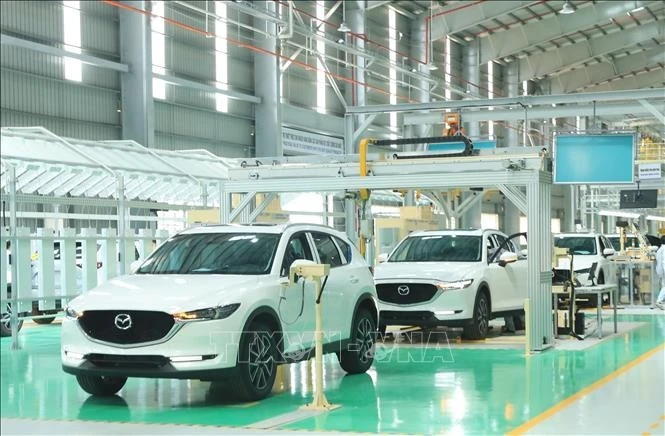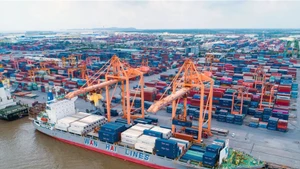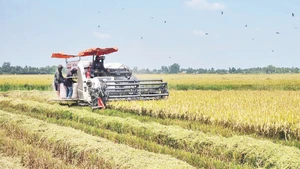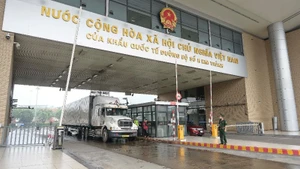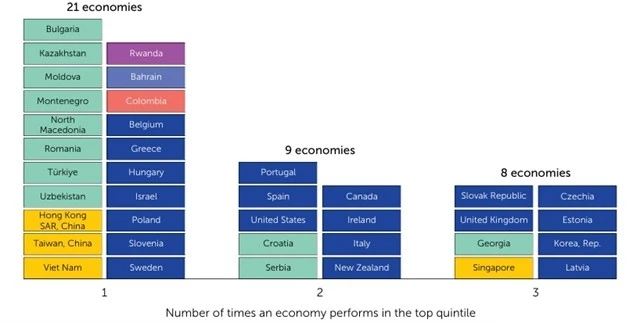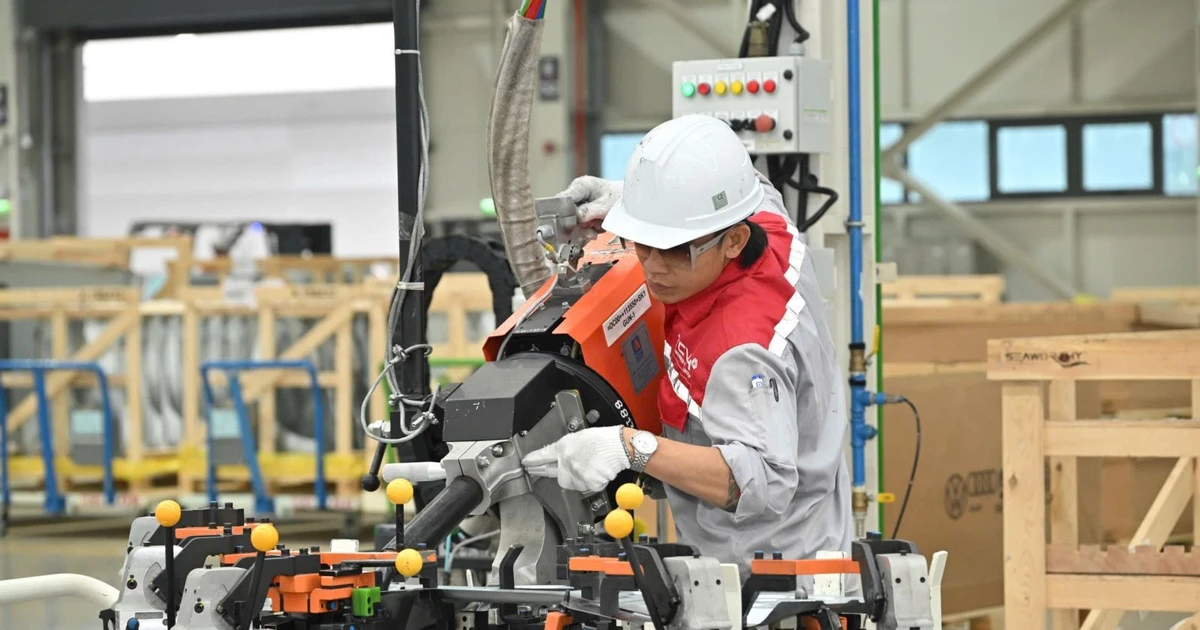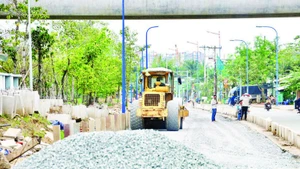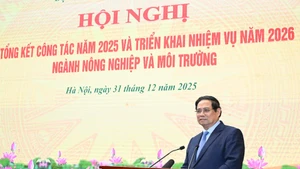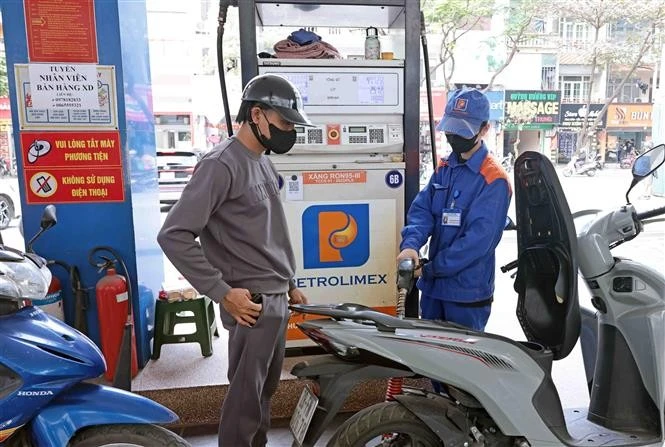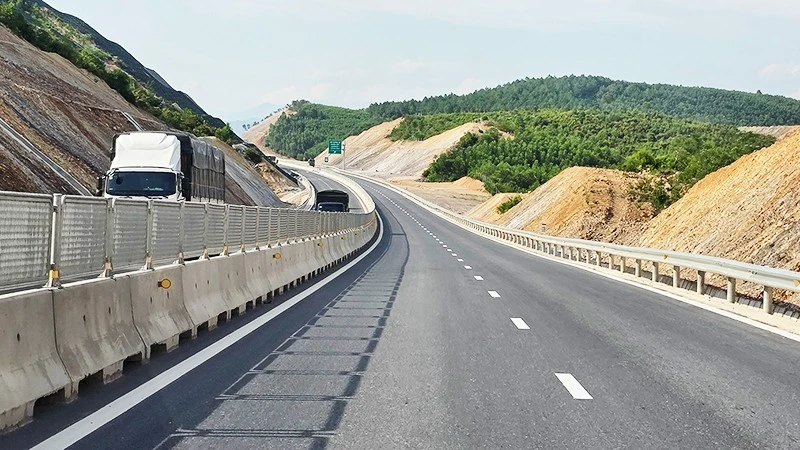Digital transformation in agriculture is not only about applying technological advances to create added value for the economy, it also helps millions of farming households access and update new knowledge, introducing new ways of thinking and doing, and being ready to change to keep up with development trends.
Farmers access digital technology
The Chuc Son Clean Vegetable Cooperative, located in Chuong My District, Hanoi, was established in 2016 and currently has 66 members, with 17.8 hectares of land certified under VietGAP and Global GAP. The cooperative’s products are strictly controlled along the entire chain, from production to processing, packaging, and consumption, ensuring transparency and food safety and 100% of products are sold under contracts with stable prices. After processing and packaging, the products are labelled with QR codes that allow traceability of each producer and plot of land.
Currently, the cooperative’s vegetables and fruits are sold in many supermarkets, schools, hospitals, and other locations in Hanoi and 12 northern provinces. According to statistics, in the first 10 months of 2024, the cooperative purchased approximately 896 tonnes of vegetables from its members, generating revenue of 21.5 billion VND, with an estimated total of 27 billion VND for the entire year, a 29% increase compared to 2023.
Hoang Van Tham, the director of the Chuc Son Clean Vegetable Cooperative, said: “To boost economic efficiency, we have applied digital technology in production management, including installing weather warning stations to help members regularly update data such as temperature, humidity, and rainfall on their phones. This allows the farmers to proactively adjust production plans and seed planting times, avoid wasting materials, and increase fertiliser efficiency by 20%. At the same time, the members actively use smartphone apps to control the irrigation system, saving fertiliser and labour while ensuring proper nutrition for crops. Additionally, the cooperative has partnered with Sorimachi Japan to implement an electronic traceability system, which helps locate farmers’ plots, map actual areas on satellite maps, input data on production areas, material costs, labour costs, etc., and manage and check all production logs on software. After entering their full production logs on smartphones, farmers can calculate the cost of production and profit margins. They can also analyse factors that increase costs and adjust their plans and processes to ensure more effective production.”
The National Agricultural Extension Centre has been intensifying its efforts to promote digital transformation and the application of science and technology through agricultural extension activities nationwide. This serves as a bridge to bring digital transformation closer to farmers, facilitating production and business management.
In Bac Giang Province, aquaculture is transitioning from extensive farming with small areas and low yields to specialised farming using intensive methods under VietGAP standards. Many have adopted digital technology to improve fish quality and productivity. Previously, feeding fish and running oxygen machines were done manually, which was labour-intensive and time-consuming. Since implementing automation technology, all operations can be controlled using smartphones.
Nguyen Van Chinh from An Duong Village, Tan Yen District, shared: “Thanks to digital transformation, we can monitor pH levels, water quality, and oxygen levels more precisely than the old manual methods. This helps us monitor fish growth and track disease sources, enabling timely intervention, which helps the fish grow well and achieve high yields.”
Challenges ahead
Many opinions suggest that while digital transformation in agriculture in Vietnam still faces many challenges, it also presents opportunities for the sector to develop strongly, and sustainably, increasing value, and boosting production and exports. The Ministry of Agriculture and Rural Development is already implementing digital transformation in areas such as crop cultivation with databases on crop regions. IoT, Big Data, and AI technologies have been applied to manage and analyse environments, types, and crop growth stages for traceability and real-time growth tracking.
In animal husbandry, IoT, biotechnology, and blockchain technologies are widely used in farms, while in forestry, GIS and remote sensing technologies are used to monitor forest conditions, detect deforestation, degradation, and early forest fire warnings through satellite imagery. In the value chain, digital transformation will help Vietnam’s agricultural sector shift from a fragmented, inefficient production model to a new model with linked value chains.
The Ministry of Agriculture and Rural Development has established and issued policies and documents on digital transformation, organised training courses for officials, and developed specialised databases in various units.
Nguyen Hoai Nam, Deputy Head of the Digital Technology Department at the Ministry of Agriculture and Rural Development, said: “Although digital transformation in agriculture has achieved positive results, it still faces challenges. One significant issue is the lack of awareness of digital transformation among government authorities, the public, and businesses, especially cooperatives and individual farmers. Digital transformation requires a synchronised, modern digital infrastructure (including IT and ICT). Furthermore, there is a lack of comprehensive databases for the agriculture sector, such as crops, livestock, agricultural materials, and policies.”
Moreover, agricultural databases are fragmented, disconnected, and not integrated or shared. Agricultural production in Vietnam is still small-scale, making it difficult to apply advanced technology. There aren’t many agricultural enterprises investing in digital transformation, and the quality of the workforce with high-level digital skills in agriculture remains limited.
Hoang Van Tham added: “Currently, the awareness of managers, farmers, and authorities at the district and commune levels about applying digital technology in cooperatives is still limited. This is the biggest barrier to applying digital technology in cooperatives. Additionally, there is a lack of skilled human resources in cooperatives, making it difficult to implement intelligent management systems, production management software, and accounting systems. Applying digital technology requires significant investment and carries high risks, while cooperatives still face a lack of funds and the spread of digital technology in cooperatives is slow and not yet truly effective.”
To further promote digital transformation in agriculture, ministries, sectors, localities, and the public need to push forward the development of a digital agricultural and rural platform by transforming mindsets, creating new institutions, developing digital infrastructure, and building common digital platforms.
At the same time, it is necessary to establish a digital agricultural platform to connect and manage supply chains, logistics, and online payments to serve effective production and business; change public perceptions about digital transformation by organising training courses to enhance knowledge; continue building successful pilot models for digital transformation in crop cultivation, livestock farming, etc., for replication in many regions.
It is also advisable to prioritise and support cooperatives in actively adopting digital transformation in production, research and standardise common data structures and specialised agricultural databases that can be integrated and shared between industry units and government levels, and research and develop blockchain-based agricultural traceability platforms.

